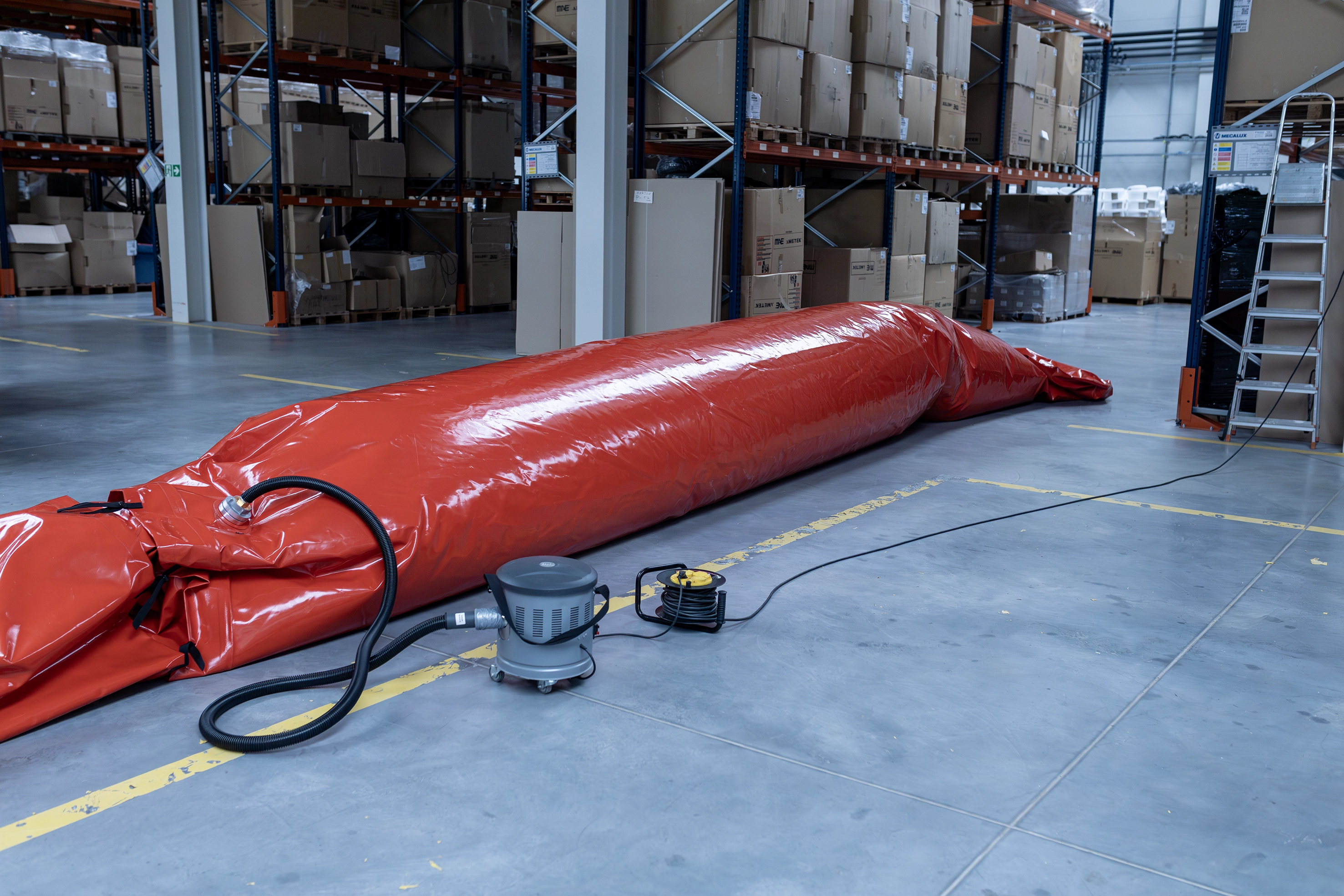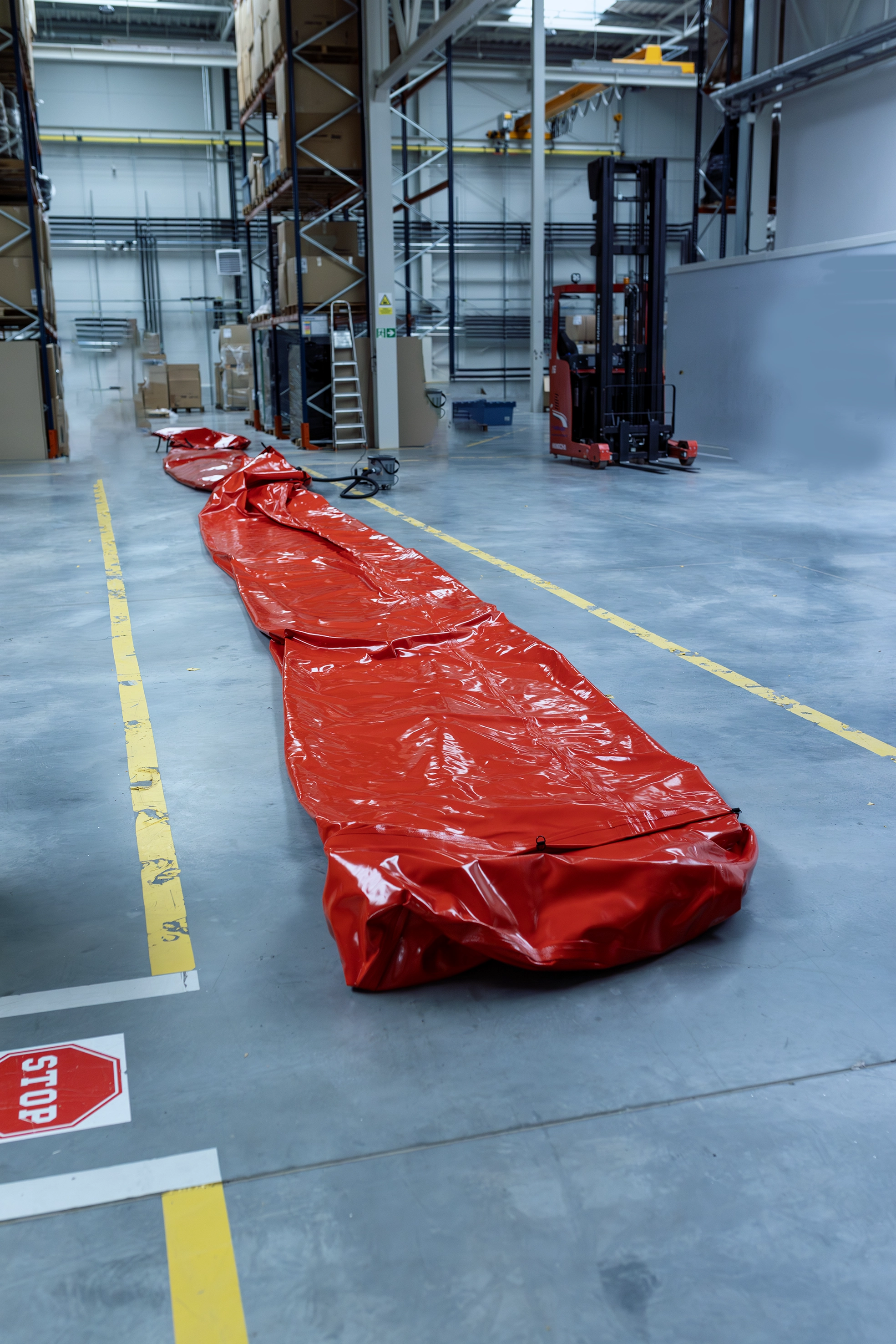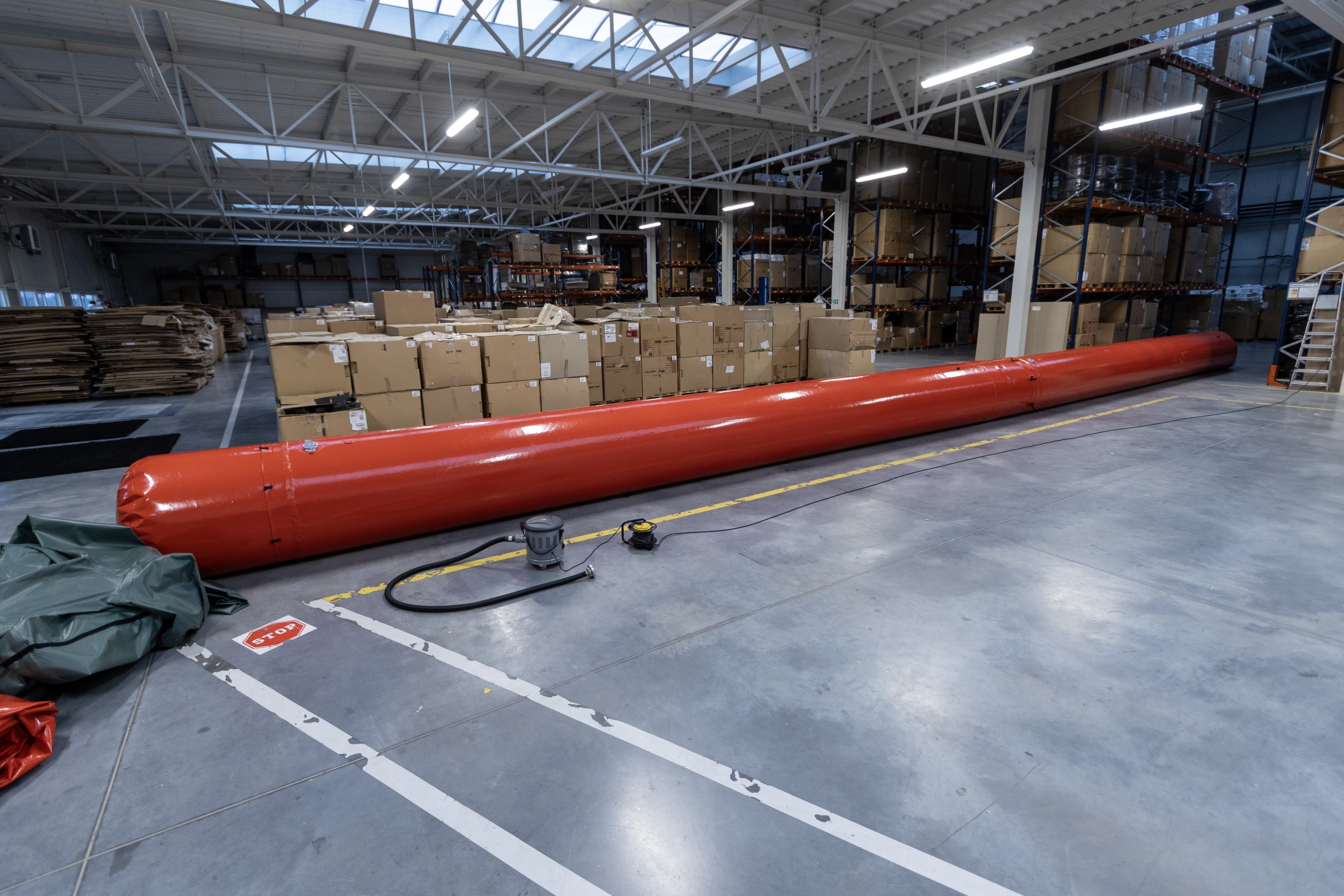Flood Sleeve
Mobile Flood Protection
Technical Information:
The flood sleeve is available in 2, 5, 10, 15, 20, 25 m lengths, or other lengths (custom-made).
The sleeve is available in two diameters: 45 cm (circumference 150 cm) and 90 cm (circumference 300 cm).

The PVC flood barrier is a mobile flood barrier that can be quickly deployed and transported. Unlike traditional bags, it requires only 3-5 people and a motor pump to deploy – it's a modern flood and flood protection system.
Short sections of barriers are ideal for securing doorways and windows in residential buildings and other structures.
Mobile barriers are an alternative to sandbags, allowing for rapid protection of the area from incoming water.
The Nawipoland barrier is a product that will prove useful for both State Fire Service (PSP) and Volunteer Fire Service (OSP) rescue teams, crisis management teams, and individuals needing to protect their property.

As additional equipment, we can also use:
- Sleeve for connecting the barriers.
- Webbing strap handles.
- Additional Storz-type filling connectors.
- Additional air vent valves.
- Anchoring strap.
- D-ring connector for anchoring.c
- Large drain flange.
- 230V / 4000L pump for removing residual water.
Barrier Operation Principles
The NAWIPOLAND flood barrier operates by filling a sleeve made of durable 900g/m^2 PVC fabric with water. Once deployed, the barrier conforms to the flat ground, creating a tight flood barrier. The weight of the water filling the barrier presses it against the ground, providing stability and preventing inflowing water.
Individual sections of the barrier can be connected using compression sleeves, allowing for the required length of the protective barrier and enabling the construction of long embankments. Discharge occurs via a Storz connector or a discharge flange (optional), facilitating dismantling, reassembly, and preparation for reuse. After using the dam, it's a good idea to inject air through the vent valve to remove any remaining water from the dam.
The Nawipoland flood barrier requires anchoring to the ground to prevent it from shifting during water inflow.
Anchoring can be done in the following ways:
- Place sandbags approximately every 1 m along the dam to prevent movement.
- Attach ropes to the dam approximately every 2 m and tie them to permanent elements.
- Attach anchor straps to the dam approximately every 2 m and anchor them to the ground (straps are an optional extra).
- Anchor the dam to the permanent elements with a rope attached to the D-rings on the dam (D-rings are an optional extra).
Connecting the Dams
The dams are connected using a sleeve that is permanently attached to one side of the dam and extends approximately 0.6-1m. The next dam is inserted into it and detached using carabiners. (Connecting is an optional extra)
Rules of Use:
- Before installing the barrier, clear the area of any sharp objects, such as stones, glass, branches, etc., that could cause damage.
- Place the individual barrier sections one by one. If they are to be connected, insert them into the connecting sleeve and connect the carabiners.
- Prepare the anchoring system (if using straps or a rope, thread it through before filling with water).
- Fill with water through the appropriate connector. If the dam is not to be connected, fill it until the water completely displaces the air through the vent valve.
- After filling, anchor the dam.
After using the dam, empty it and clean it of any adhering objects, such as grass, branches, and any remaining water, using a pump (optional).

